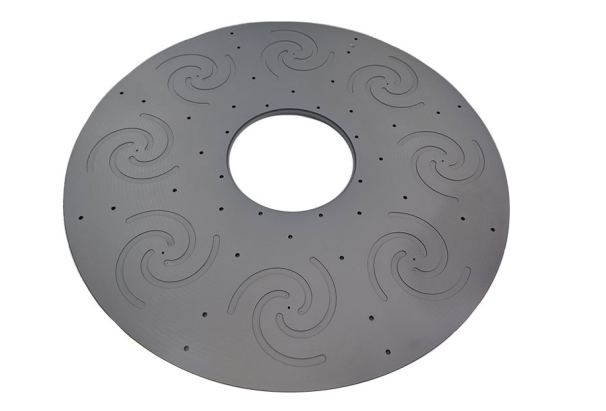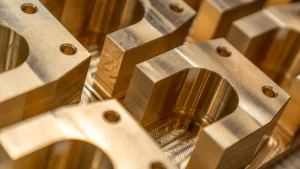Planetary disk research plays a crucial role in unraveling the mysteries of planetary formation. These disks, composed of gas and dust, surround young stars and serve as the birthplace of planets. By studying them, scientists gain insights into how planets emerge and evolve. Understanding the history and milestones of this field reveals the progression of knowledge and technological breakthroughs. This research has transformed astronomy by connecting the dots between star formation, planetary systems, and the potential for life beyond Earth.

Key Takeaways
- Planetary Disk are essential for understanding how planets form, as they provide the raw materials and environment necessary for planetary development.
- The nebular hypothesis serves as a foundational theory, explaining that planets form from rotating clouds of gas and dust around young stars.
- Technological advancements, particularly in telescopes like ALMA and JWST, have revolutionized the study of planetary disks, allowing for detailed imaging and analysis of their structures.
- Protoplanetary disks are key to observing planet formation in real-time, revealing features like gaps and rings that indicate the presence of forming planets.
- The connection between planetary disks and exoplanets highlights the importance of these disks in shaping the characteristics of emerging planetary systems.
- Future research will focus on unanswered questions about disk formation and diversity, as well as the role of chemical processes in creating the building blocks of life.
- Collaboration across scientific disciplines and advancements in technology will drive the next generation of discoveries in planetary disk research.
Early Observations and Theoretical Foundations
The First Observations of Planetary Disks
Astronomers began observing Planetary Disk in the late 18th and early 19th centuries. Early telescopes lacked the precision to directly detect these structures, but scientists inferred their existence by studying the behavior of light around young stars. William Herschel, a prominent astronomer, made significant contributions by identifying regions of nebulosity near stars. These observations hinted at the presence of gas and dust surrounding young stellar objects.
By the mid-20th century, advancements in radio astronomy allowed researchers to detect emissions from molecular clouds. These clouds, often associated with star-forming regions, provided the first indirect evidence of planetary disks. Observations of these regions revealed flattened, rotating structures, which matched theoretical predictions of disk-like formations around young stars. This marked a turning point, as astronomers began connecting these observations to the processes of planetary formation.
Contributions to the Nebular Hypothesis and Early Theories
The nebular hypothesis, proposed in the 18th century by Immanuel Kant and Pierre-Simon Laplace, laid the foundation for understanding planetary disk formation. This theory suggested that planets form from a rotating cloud of gas and dust, which collapses under gravity to create a central star and a surrounding disk. Early observations of planetary disks supported this idea, providing a framework for studying the origins of planetary systems.
In the 20th century, scientists refined the nebular hypothesis by incorporating new data from spectroscopy and imaging. These tools revealed the chemical composition of disks, confirming the presence of elements essential for planet formation. Researchers also developed mathematical models to simulate disk dynamics, shedding light on how particles within the disk coalesce to form planets. These advancements bridged the gap between theoretical predictions and observational evidence, solidifying the nebular hypothesis as a cornerstone of planetary science.
Technological Advancements in Planetary Disk Research
The Role of Advanced Telescopes and Imaging Techniques
Technological progress has revolutionized the study of Planetary Disk . Early telescopes provided limited data, but modern instruments have transformed observations into detailed analyses. Ground-based telescopes, such as those at the European Southern Observatory, introduced adaptive optics to correct atmospheric distortions. This innovation allowed astronomers to capture sharper images of planetary disks.
Space-based telescopes further advanced the field. The Hubble Space Telescope delivered unprecedented clarity by operating above Earth’s atmosphere. Its observations revealed intricate disk structures and provided insights into their composition. Infrared imaging, pioneered by telescopes like Spitzer, enabled scientists to study cooler regions of disks that emit faint light invisible to optical instruments.
Radio telescopes also played a critical role. Arrays like the Atacama Large Millimeter/submillimeter Array (ALMA) offered high-resolution imaging of disk material. ALMA’s ability to detect millimeter wavelengths allowed researchers to map the distribution of gas and dust within planetary disks. These advancements bridged gaps in understanding disk dynamics and their role in planet formation.
“The combination of ground-based and space-based telescopes has unlocked a new era in planetary disk research, revealing details once thought impossible to observe.” – Excerpt from an astronomical journal.
Discovery and Study of Protoplanetary Disks
The discovery of protoplanetary disks marked a milestone in planetary science. These disks, composed of gas and dust, surround young stars and serve as the building blocks for planets. Observations in the late 20th century confirmed their existence, with infrared and radio telescopes detecting emissions from these structures.
Protoplanetary disks provided direct evidence of planetary formation processes. Scientists observed features like gaps and rings within disks, which indicated the presence of forming planets. ALMA’s high-resolution imaging revealed these patterns in stunning detail, offering clues about how planets interact with their surrounding material.
Chemical studies of protoplanetary disks expanded knowledge further. Researchers identified organic molecules, such as methanol, within these disks. These findings suggested that the building blocks of life might form during the early stages of planetary system development. The study of protoplanetary disks continues to uncover the complex interplay between disk evolution and planet formation.
“Planetary Disk are the laboratories of planet formation, providing a window into the origins of planetary systems and the potential for life.” – Statement from a leading astrophysicist.
Key Milestones in Planetary Disk Research
First Direct Imaging of Planetary Disks
The first direct imaging of planetary disks marked a groundbreaking achievement in astronomy. In 1984, astronomers captured the first visual evidence of a circumstellar disk around Beta Pictoris, a young star located approximately 63 light-years away. This discovery provided undeniable proof of the existence of planetary disks. The image revealed a flattened structure of gas and dust, aligning with theoretical predictions about disk formation.
Subsequent advancements in imaging technology allowed researchers to observe more planetary disks with greater clarity. The Hubble Space Telescope played a pivotal role in this progress. Its high-resolution images showcased intricate details, such as gaps and rings within disks, which hinted at the presence of forming planets. These observations confirmed that planetary disks are dynamic environments where planets actively shape their surroundings.
Direct imaging also enabled scientists to study the composition of these disks. By analyzing the light emitted or absorbed by the disk material, researchers identified elements like hydrogen, carbon, and oxygen. These findings deepened the understanding of how planetary systems form and evolve. The ability to directly observe planetary disks transformed theoretical concepts into observable phenomena, solidifying their role in planetary formation studies.
“The direct imaging of planetary disks has revolutionized our understanding of planet formation, offering a window into the early stages of planetary system development.” – Statement from an astrophysical research paper.
Linking Planetary Disks to Exoplanetary Systems
The connection between planetary disks and exoplanetary systems represents a significant milestone in planetary science. Observations of young stars with surrounding disks revealed patterns that matched the characteristics of known exoplanetary systems. This link provided evidence that planetary disks serve as the birthplaces of planets, bridging the gap between disk studies and exoplanet research.
Astronomers identified young exoplanets embedded within their host stars’ disks. These discoveries offered direct evidence of planet formation in real-time. For instance, the detection of PDS 70b, a young exoplanet within the disk of the star PDS 70, showcased how planets interact with their disks. The planet’s gravitational influence created gaps and distortions in the disk, confirming theoretical models of disk-planet interactions.
Studies of planetary disks also revealed similarities in the chemical compositions of disks and exoplanetary atmospheres. Researchers found that the elements present in disks, such as water vapor and organic molecules, often matched those detected in exoplanet atmospheres. This connection suggested that the materials within planetary disks play a crucial role in shaping the properties of emerging planets.
The link between planetary disks and exoplanetary systems has profound implications for understanding the universe. It highlights the interconnected nature of star and planet formation processes. By studying planetary disks, scientists gain insights into the origins of diverse planetary systems, including those that may harbor conditions suitable for life.
“Planetary disks are the cradles of planetary systems, offering a glimpse into the processes that shape the diversity of worlds in our galaxy.” – Excerpt from an astronomical journal.
Modern Research and Current Understanding of Planetary Disks
Recent Discoveries and Contributions of ALMA and JWST
Recent advancements in observational technology have significantly enhanced the study of planetary disks. The Atacama Large Millimeter/submillimeter Array (ALMA) has provided astronomers with high-resolution images of these disks. Its ability to detect millimeter wavelengths allows researchers to map the distribution of gas and dust with remarkable precision. ALMA has revealed intricate structures, such as rings, gaps, and spirals, which indicate active planet formation within these disks.
The James Webb Space Telescope (JWST) has further expanded the understanding of planetary disks. Operating in the infrared spectrum, JWST can observe cooler regions of disks that were previously inaccessible. Its powerful instruments have detected water vapor, carbon dioxide, and organic molecules within these disks. These findings suggest that the building blocks of life may form during the early stages of planetary system development.
Both ALMA and JWST have contributed to identifying young exoplanets embedded within their host stars’ disks. These observations provide direct evidence of planet formation in real-time. By studying these systems, scientists gain insights into how planets interact with their surrounding material and shape the evolution of their disks.
“The combined efforts of ALMA and JWST have revolutionized planetary disk research, offering unprecedented clarity and detail.” – Statement from a leading astrophysicist.
Current Theories on Disk Evolution and Planet Formation
Modern theories on planetary disk evolution focus on the dynamic processes that shape these structures. Researchers propose that interactions between gas, dust, and forming planets drive the evolution of disks. Gravitational forces from young planets create gaps and rings, altering the distribution of material within the disk. These changes influence the growth and migration of planets.
Stellar radiation and magnetic fields also play critical roles in disk evolution. Radiation from the central star heats the disk, causing material to evaporate and disperse over time. Magnetic fields affect the movement of charged particles, impacting the disk’s structure and dynamics. These factors contribute to the eventual dissipation of the disk, leaving behind a fully formed planetary system.
Theories on planet formation emphasize the importance of accretion. Dust particles within the disk collide and stick together, forming larger bodies called planetesimals. Over time, these planetesimals grow into planets through continued collisions and gravitational interactions. Observations of planetary disks support these models, providing evidence of the processes that lead to planet formation.
Recent studies also explore the chemical composition of planetary disks. The presence of water, methane, and other organic molecules suggests that these disks may create environments suitable for life. Understanding the chemical evolution of disks helps scientists investigate the potential for habitability in emerging planetary systems.
“Planetary disks are dynamic environments where physics and chemistry converge to create the building blocks of planets and, potentially, life.” – Excerpt from an astronomical journal.
Future Directions and Challenges in Planetary Disk Research
Emerging Questions About Planetary Disk Formation
Planetary disk research has made significant progress, but many questions remain unanswered. Scientists continue to investigate the initial stages of disk formation. They aim to understand how gas and dust clouds collapse to create these structures. The role of turbulence and magnetic fields in shaping disks remains a critical area of study. Researchers also seek to determine why some disks evolve into planetary systems while others dissipate without forming planets.
Another pressing question involves the diversity of planetary disks. Observations reveal variations in size, composition, and lifespan. Scientists strive to uncover the factors influencing these differences. They examine how the mass and type of the central star affect disk properties. Additionally, they explore the impact of environmental conditions, such as nearby stellar radiation, on disk evolution.
The chemical complexity of planetary disks presents another challenge. Researchers aim to identify the processes that lead to the formation of organic molecules within these disks. They investigate how these molecules interact with other materials to create the building blocks of life. Understanding these processes could provide insights into the origins of life in the universe.
“The unanswered questions about planetary disk formation drive the next generation of research, pushing the boundaries of our understanding of planetary systems.” – Excerpt from a leading astrophysical journal.
The Role of Future Technologies in Advancing Research
Future technologies promise to revolutionize planetary disk research. Next-generation telescopes, such as the Extremely Large Telescope (ELT) and the Square Kilometer Array (SKA), will provide unprecedented observational capabilities. These instruments will capture high-resolution images of planetary disks, revealing finer details of their structure and composition. They will also detect faint emissions from distant disks, expanding the scope of research to include more diverse systems.
Advancements in computational modeling will complement observational efforts. Improved algorithms and increased computing power will enable scientists to simulate disk dynamics with greater accuracy. These models will help researchers test theories about disk evolution and planet formation. They will also allow scientists to predict how specific conditions influence the development of planetary systems.
Space missions will play a crucial role in future research. Proposed missions, such as the Origins Space Telescope, aim to study the chemical composition of planetary disks in detail. These missions will focus on detecting water, organic molecules, and other key compounds. Their findings could shed light on the potential for habitability in emerging planetary systems.
Collaboration between disciplines will further enhance research efforts. Chemists, physicists, and astronomers will work together to address complex questions about planetary disks. Their combined expertise will lead to a more comprehensive understanding of these structures and their role in the universe.
“Future technologies will unlock new possibilities in planetary disk research, enabling scientists to explore the origins of planets and life with unparalleled precision.” – Statement from a prominent astrophysicist.
Planetary disk research has undergone remarkable progress, starting from early observations to groundbreaking modern discoveries. Each milestone has deepened the understanding of planetary formation, revealing the intricate processes that shape planetary systems. The field has illuminated connections between star formation, disk evolution, and planet creation. Its significance extends beyond astronomy, addressing fundamental questions about the origins of planets and the potential for life. As technology advances, this research continues to inspire curiosity and expand humanity’s knowledge of the universe.
FAQ
What are planetary disks?
Planetary disks are rotating structures of gas and dust that surround young stars. These disks serve as the birthplace of planets, providing the raw materials for their formation. Scientists study these disks to understand how planetary systems emerge and evolve.
How do planetary disks form?
Planetary disks form during the early stages of star formation. A collapsing cloud of gas and dust creates a central protostar. The remaining material flattens into a disk due to the conservation of angular momentum. This disk eventually evolves, giving rise to planets and other celestial bodies.
Why are planetary disks important for understanding planet formation?
Planetary disks hold the key to understanding how planets form. They contain the building blocks of planets, such as gas, dust, and organic molecules. Observing these disks helps scientists study the processes that lead to the creation of planets and their eventual migration within the system.
What role do telescopes like ALMA and JWST play in planetary disk research?
Telescopes like ALMA and JWST provide high-resolution images and detailed data about planetary disks. ALMA specializes in detecting millimeter wavelengths, revealing the distribution of gas and dust. JWST observes infrared light, uncovering cooler regions of disks and identifying chemical compounds like water and organic molecules.
What are protoplanetary disks?
Protoplanetary disks are a specific type of planetary disk found around young stars. These disks are rich in gas and dust, serving as the primary sites for planet formation. Features like gaps and rings within these disks often indicate the presence of forming planets.
How do scientists detect planets within planetary disks?
Scientists detect planets within planetary disks by observing gaps, rings, or distortions in the disk’s structure. These features often result from the gravitational influence of forming planets. Advanced imaging techniques, such as those used by ALMA and JWST, allow researchers to identify these patterns with precision.
What is the connection between planetary disks and exoplanets?
Planetary disks and exoplanets are closely linked. Disks provide the environment where exoplanets form. Observations of young exoplanets within disks confirm this connection. The chemical composition of disks often matches the atmospheres of exoplanets, highlighting their shared origins.
Can planetary disks contain the building blocks of life?
Yes, planetary disks can contain the building blocks of life. Scientists have detected organic molecules, such as methanol, within these disks. These findings suggest that the chemical processes leading to life may begin during the early stages of planetary system development.
What challenges do researchers face in studying planetary disks?
Researchers face several challenges in studying planetary disks. The vast distances to these disks make observations difficult. The complexity of disk dynamics and chemical interactions adds to the challenge. Limited technology also restricts the ability to study faint or distant disks in detail.
What advancements can future technologies bring to planetary disk research?
Future technologies, such as next-generation telescopes and advanced computational models, promise significant advancements. These tools will provide higher-resolution images and more accurate simulations of disk dynamics. Proposed space missions will also focus on studying the chemical composition of disks, offering new insights into their evolution and potential for habitability.
For more product details, please contact steven@china-vet.com Or website: www.vet-china.com.






